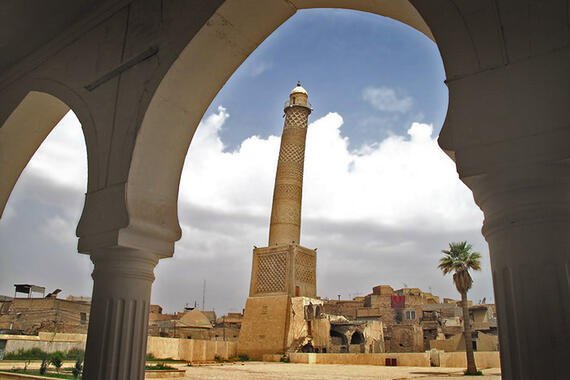Mailing List
Sign up for our mailing list to get latest updates and offers.
With a diverse society, comes diverse symbols and monuments within a community. One of these monuments is the Great Mosque of Al-Nuri in Mosul, Nineveh Governate. Tradition holds that the mosque was first built in the late 12th century, although it underwent many renovations over the years. The mosque withstood various hostile invading forces over its 850-year history

The Mosque of Nur al-Din in Mosul is one of the city's three great mosques and is also known as al-Jami' al-Nuri al-Kabir (The Great Nuri Mosque). Located in the heart of the old city, construction on the mosque began in ca. 1170/566 AH under Nur al-Din Mahmud ibn Zangi (1146-1174/541-569 AH) and included both a prayer hall and a madrasa. The mosque is perhaps most famous for its gently leaning brick minaret, known as "al-Hadba," which is situated on the north side of the complex. The mosque was irrevocably altered during 1942 as part of a renovation project orchestrated by the Iraqi Department of Antiquities. These restoration works consisted of destroying the old mosque and rebuilding it with old and new material according to a new plan. All that remains from the original complex are the minaret, two mihrabs, an inscribed marble slab, and some stucco decoration. (A mihrab is a niche in the wall of a mosque that indicates the qibla, the direction of the Kaaba in Mecca towards which Muslims should face when praying.)
The present-day mosque consists of a rectangular prayer hall with a dome covering the central bay before the mihrab. Adjoining this prayer hall to the north is a large open courtyard with an ablutions fountain. The western part of the courtyard is paved while the eastern part contains greenery. The original form and decoration of the mosque and its sequence of construction is a matter of some debate.

The original mosque had three main mihrabs, whose history the Mosulite art historian Sa'id Daywahji has clarified as follows. At the time of the Mosque's demolition in 1944, the central mihrab under the dome of the prayer hall was a simple construction with a muqarnas hood. It was inscribed with the year 1281 AH and covered several earlier mihrabs. Two older and more ornate mihrabs were found in the mosque. The first of these was transferred from the Umayyad Mosque in Mosul and bears the date of 543 AH. It was made of marble and had vegetal arabesques covering the niche and hood, framed by Arabic inscriptions. This mihrab was originally placed in a wing of the prayer hall reserved for Shafi'ites, but after the reconstruction of the mosque in 1944 it was transferred to the centre of the qibla wall under the dome, replacing the 1864 mihrab mentioned above. The third important mihrab is a handsome stone piece whose decoration dates it to the period of Nur al-Din Mahmud. In the early 20th century, it had been moved into the courtyard of the mosque in an area that was used for prayer during the summer. After reconstruction, this mihrab was transferred to Baghdad.
